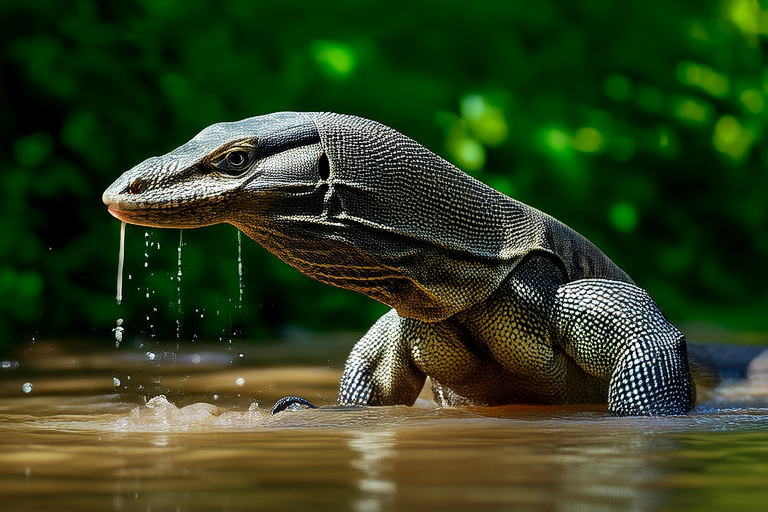Aquatic Adventures: Discovering the Thrilling World of the Water Monitor
The world of reptiles is vast and varied, offering countless species that have captivated the imagination of explorers and nature lovers alike. Among these, the water monitor (Varanus salvator) stands out as one of the most fascinating and formidable creatures. This article embarks on an aquatic adventure, delving into the unique characteristics, habitats, behaviors, and conservation efforts surrounding this remarkable species.
Unique Characteristics of Water Monitors
Water monitors are known for their impressive size, adaptability, and exceptional aquatic skills. These lizards can grow up to 3 meters (9.8 feet) in length, making them one of the largest lizards in the world. Their powerful limbs and long tails make them excellent swimmers, capable of diving to depths of over 4 meters (13 feet). Their skin is covered in scales that protect them from predators and help them move efficiently through water. The water monitor’s adaptability allows it to thrive in various environments, from coastal mangroves to freshwater rivers and lakes.
Natural Habitats and Ecosystems
Water monitors are native to Southeast Asia, where they inhabit a wide range of environments. They are particularly common in the tropical rainforests, mangrove swamps, and wetlands of countries such as Indonesia, Malaysia, Thailand, and the Philippines. These ecosystems provide ample food sources, shelter, and breeding grounds for the water monitors. In addition to being skilled swimmers, water monitors are also adept at climbing trees, which allows them to escape predators and access high branches for basking in the sun. Their presence in these ecosystems plays a crucial role in maintaining balance and contributing to biodiversity.
Diet, Hunting Techniques, and Behaviors
The water monitor is a carnivorous predator with a diverse diet that includes fish, frogs, birds, small mammals, and even other reptiles. Their hunting techniques are both efficient and stealthy. They often lie in wait near the water’s edge or hidden in vegetation, striking when potential prey comes within reach. Their sharp claws and strong jaws enable them to catch and subdue their prey effectively. Despite their intimidating appearance, water monitors play an essential role in controlling populations of smaller animals in their habitats. When not hunting, water monitors spend time basking in the sun to regulate their body temperature and digest their meals.
Lifespan, Growth, and Human Interactions
Water monitors have a relatively long lifespan, typically living between 10 to 15 years in the wild. They grow rapidly during their early years, reaching maturity at around 2 to 3 years of age. Female water monitors lay clutches of eggs, usually ranging from 10 to 60, depending on their size and age. These eggs are buried in nests, often in sandy areas or termite mounds, providing protection from predators and ensuring proper incubation conditions.
Water monitors’ interactions with humans are complex. While they are generally shy and avoid contact with people, they are sometimes captured for the exotic pet trade or hunted for their meat and skins. In some cultures, water monitors are revered and considered sacred, while in others, they are feared due to their large size and predatory nature. It is important to approach water monitors with caution and respect for their natural habitat.
Conservation Efforts and Habitat Preservation
The conservation of water monitors and their habitats is crucial for maintaining ecological balance and biodiversity. Various organizations and initiatives are working tirelessly to protect these magnificent creatures. Conservation efforts include habitat restoration, anti-poaching measures, and public awareness campaigns aimed at reducing human-wildlife conflicts. By preserving the ecosystems that water monitors call home, we can ensure the survival of this species and its vital role in the environment.
In conclusion, the water monitor is a testament to the wonders of nature’s adaptability and resilience. From their impressive size and aquatic prowess to their vital role in their ecosystems, these lizards offer endless fascination and inspiration. As we continue to explore and learn more about these creatures, it is our responsibility to protect them and their habitats for future generations. Join us on this aquatic adventure and discover the thrilling world of the water monitor.
